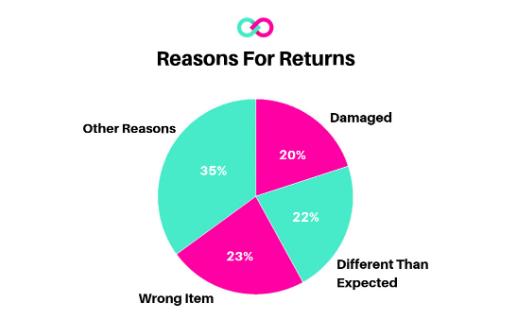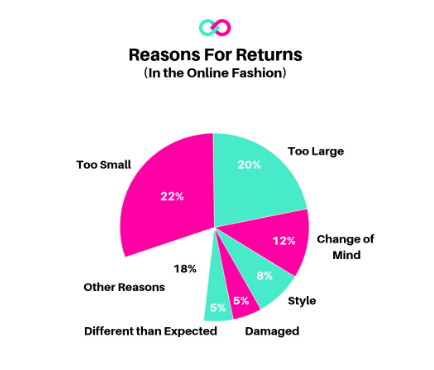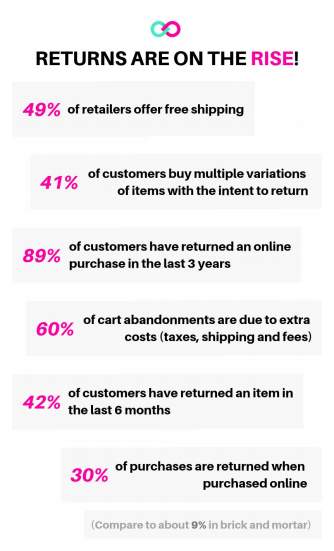Ecommerce Serial Returners: Wardrobers vs Fitting Roomers
Returns…happen!
You can do everything to keep your item descriptions accurate and your shipments secure and they might still come back to you.
Fashion eCommerce sites are a prime target for returns.
For this reason we went ahead and analyzed the two different types of Serial Returners: Wardrobers and Fitting Roomers.
Table of Contents
Expect Returns: they are the new normal!
Returns are not something that you only need to worry about if you’re in the fashion world.
Return rates are higher than ever and how you deal with them can have critical implications on your customers’ satisfaction.
Make Returns Easier: understand the reasons for returns
Retailers don’t only have to make returns easier, they have to consider what is happening when customers decide to send a product back. Understanding these will help your brand gain a better perspective on the situation, a critical first step in improving your returns process.

Fashion eCommerce sites seem to be a prime target for returns. For this reason we went ahead and broke down reasons for returns specifically regarding this area.

At first, all of this may seem intimidating.
However, following this guide will help you manage returns like a pro and keep your customers coming back.
Dealing with Serial Returners: The
Wardrober and The Fitting Roomer
A Serial Returner is a customer who purchases with the intent to and habitually makes returns.
There are two types of Serial Returners :
- The Wardrober, who wears once and returns the item. In this case the customer can’t afford or likes to take advantage of the Return Policy
- The Fitting Roomer, who purchases multiple sizes, keeps what they like and returns the rest.

While Wardrobers are strongly discouraged, some brands show that they’re listening to the customer by starting to promote ‘try-at-home’ programs. If it works within your margin, this is something that your company could try.
Now that you understand what the main motives of serial returners are, let’s look at how to best deal with their habits. The first step is to set up a system to track and differentiate the types of returners.
To do this, establish refund thresholds that you can use to tag customers for suspicious activity. Once they are flagged, notify your customer service team to investigate.
If their activity is confirmed, add those customers as a segment within an onsite personalization tool to exclude them from free shipping and/or full-refund offers.
Alternatively, you can exclude them from free shipping at checkout by creating a shipping script based on one or more of your customer tags.
So, set a system to track returns and know your customers. All of the elements of this return process from the shipping return creation to the return location and storage, is considered to be classified as reverse logistics.
In this article we cover everything you need to know about reverse logistics and how setting up appropriate strategies can be an asset to your company.
Wrapping Up
You’re now fully equipped to deal with serial returners efficiently and effectively. Remember that understanding why returns are made and how to approach them will increase your customer satisfaction and in turn keep
them coming back.
If you want to learn more about Returns Management here you can download “Ecommerce Returns 101” our complete guide to Ecommerce Returns.
ShippyPro is the complete shipping software for online and offline retail. With Label Creator, Track & Trace, Easy Return and Analytics features, our software simplifies your shipping operations. ShippyPro integrates with over 180 carriers and 80 sales channels, making it compatible with a wide range of products and use cases.















